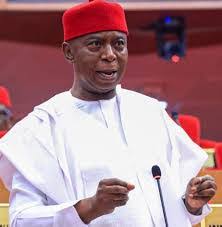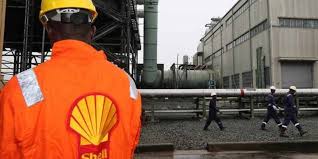Oil & Energy
Oil Firm Plans $3bn Lifeline For Power Sector
Senior Advisor for Digital Technologies, TOTAL, Mr Pascal Dauboin, says the company is to spend three billion dollar on energy modernisation programme in Nigeria to enhance efficient energy production and usage.
Dauboin made this known on Thursday during a meeting with Nigerian delegation at the Gulf Information Technology Exhibition (GITEX 2016), in Dubai.
According to him, TOTAL aims to expand the electricity supply of Nigeria and create more efficient energy production and usage in the country.
“The three billion dollar energy modernisation programme aims to expand the electricity supply, create more efficient energy production and usage, and increase rural and semi-urban power access from 35 per cent to 75 per cent.
“ TOTAL is at the forefront of adopting innovations such as drones, robotics, and early event detection systems to monitor and repair infrastructure.
“The new generations of sensors will enable the development of new products for real time, on-line analysis, following the always increasing safety and quality requirements.
“Digitally transformed processes will increase performance, robustness and safety in many industrial domains, while building the job skills of tomorrow,” he said.
He, therefore, urged other multinational companies to do more in supporting better energy infrastructures in the continent, especially in Nigeria.
“ Multinational companies’ experience of working in a multinational and multicultural context can help drive innovation across energy sector, by playing a leading role in supporting high-tech energy infrastructure projects in Nigeria and Africa at large.
“Nigeria is Africa’s largest oil producer, and the world’s fourth-largest liquefied natural gas exporter, according to the United States Energy Information Administration.
“In today’s interconnected world, the ability to find, share, and integrate knowledge from across the spectrum is essential.”
Oil & Energy
Nigeria Loses More Crude Oil Than Some OPEC Members – Nwoko

Nigeria’s losses due to crude oil theft has been said to be more significant than those of some other members of the Organisation of Petroleum Exporting Countries(OPEC).
The Chairman, Senate Ad- hoc Committee on Crude Oil Theft, Senator Ned Nwoko, made this known in an interview with newsmen in Abuja.
Nwoko noted with dismay the detrimental impact of the issue, which, he said include economic damage, environmental destruction, and its impact on host communities.
According to him, the theft was not only weakening the Naira, but also depriving the nation of vital revenue needed for infrastructure, healthcare, education and social development.
The Senator representing Delta North Senatorial District described the scale of the theft as staggering, with reports indicating losses of over 200,000 barrels per day.
Nwoko disclosed that the ad hoc committee on Crude Oil Theft, which he chairs, recently had a two-day public hearing on the rampant theft of crude oil through illegal bunkering, pipeline vandalism, and the systemic gaps in the regulation and surveillance of the nation’s petroleum resources.
According to him, the public hearing was a pivotal step in addressing one of the most pressing challenges facing the nation.
‘’Nigeria loses billions of dollars annually to crude oil theft. This is severely undermining our economy, weakening the Naira and depriving the nation of vital revenue needed for infrastructure, healthcare, education, and social development.
‘’The scale of this theft is staggering, with reports indicating losses of over 200,000 barrels per day more than some OPEC member nations produce.
‘’This criminal enterprise fuels corruption, funds illegal activities and devastates our environment through spills and pollution.
‘’The public hearing was not just another talk shop; it was a decisive platform to uncover the root causes of crude oil theft, bunkering and pipeline vandalism.
‘’It was a platform to evaluate the effectiveness of existing surveillance, monitoring, and enforcement mechanisms; Identify regulatory and legislative gaps that enable these crimes to thrive.
‘’It was also to engage stakeholders, security agencies, host communities, oil companies, regulators, and experts to proffer actionable solutions; and strengthen legal frameworks to ensure stricter penalties and more efficient prosecution of offenders”, he said.
Nwoko noted that Nigeria’s survival depended
Oil & Energy
Tap Into Offshore Oil, Gas Opportunities, SNEPCO Urges Companies

Shell Nigeria Exploration and Production Company Ltd. (SNEPCo) has called on Nigerian companies to position themselves strategically to take full advantage of the growing opportunities in upcoming offshore and shallow water oil and gas projects.
The Managing Director, SNEPCO, Ronald Adams, made the call at the 5th Nigerian Oil and Gas Opportunity Fair (NOGOF) Conference, held in Yenagoa, Bayelsa State, last Thursday.
Adams highlighted the major projects, including Bonga Southwest Aparo, Bonga North, and the Bonga Main Life Extension, as key areas where Nigerian businesses can grow their capacity and increase their involvement.
“Shell Nigeria Exploration and Production Company Ltd. (SNEPCo) says Nigerian companies have a lot to benefit if they are prepared to take advantage of more opportunities in its offshore and shallow water oil and gas projects.
“Projects such as Bonga Southwest Aparo, Bonga North and Bonga Main Life Extension could grow Nigerian businesses and improve their expertise if they applied themselves seriously to executing higher value contracts”, Adams stated.
Adams noted that SNEPCo pioneered Nigeria’s deepwater oil exploration with the Bonga development and has since played a key role in growing local industry capacity.
He emphasized that Nigerian businesses could expand in key areas like logistics, drilling, and the construction of vital equipment such as subsea systems, mooring units, and gas processing facilities.
The SNEPCO boss explained that since production began at the Bonga field in 2005, SNEPCo has worked closely with Nigerian contractors to build systems and develop a skilled workforce capable of delivering projects safely, on time, and within budget both in Nigeria and across West Africa.
According to him, this long-term support has enabled local firms to take on key roles in managing the Bonga Floating, Production, Storage and Offloading (FPSO) vessel, which reached a major milestone by producing its one-billion barrel of oil on February 3, 2023.
Oil & Energy
Administrator Assures Community Of Improved Power Supply

The Emohua Local Government Area Administrator, Franklin Ajinwo, has pledged to improve electricity distribution in Oduoha Ogbakiri and its environs.
Ajinwo made the pledge recently while playing host in a courtesy visit to the Oduoha Ogbakiri Wezina Council of Chiefs, in his office in Rumuakunde.
He stated that arrangements are underway to enhance available power, reduce frequent outages, and promote steady electricity supply.
The move, he said, was aimed at boosting small and medium-scale businesses in the area.
“The essence of power is not just to have light at night. It’s for those who can use it to enhance their businesses”, he said.
The Administrator, who commended the peaceful nature of Ogbakiri people, urged the Chiefs to continue in promoting peace and stability, saying “meaningful development can only thrive in a peaceful environment”.
He also charged the Chiefs to protect existing infrastructure while promising to address the challenges faced by the community.
Earlier, the Oduoha Ogbakiri Wezina Council of Chiefs, led by HRH Eze Goodluck Mekwa Eleni Ekenta XV, expressed gratitude to the Administrator over his appointment and pledged their support to his administration.
The chiefs highlighted challenges facing the community to include incessant power outage, need for new transformers, and the completion of Community Secondary School, Oduoha.
The visit underscored the community’s expectations from the LGA administration.
With Ajinwo’s assurance of enhancing electricity distribution and promoting development, the people of Oduoha Ogbakiri said they look forward to a brighter future.
By: King Onunwor
-
Niger Delta1 hour ago
Adopt African System Against Crime, Don Urges Security Agencies
-
Rivers20 mins ago
Monarch Cautions Youths Against Illicit Drug Consumption
-
Opinion2 hours ago
Why Reduce Cut-Off Mark for C.O.E ?
-
Politics1 hour ago
Alleged Money Laundering: Fayose Has No Case To Answer, Court Tells EFCC
-
Rivers20 mins ago
CDS Urges Communities To Protect Pipelines
-
Politics2 hours ago
Atiku’s Exit No Problem To PDP – Makinde
-

 News58 mins ago
News58 mins agoJAMB Uncovers 9,469 Fake Admissions In 20 Tertiary Institutions
-

 News14 mins ago
News14 mins agoNAF Disowns Recruitment Adverts, Says It’s Fake

